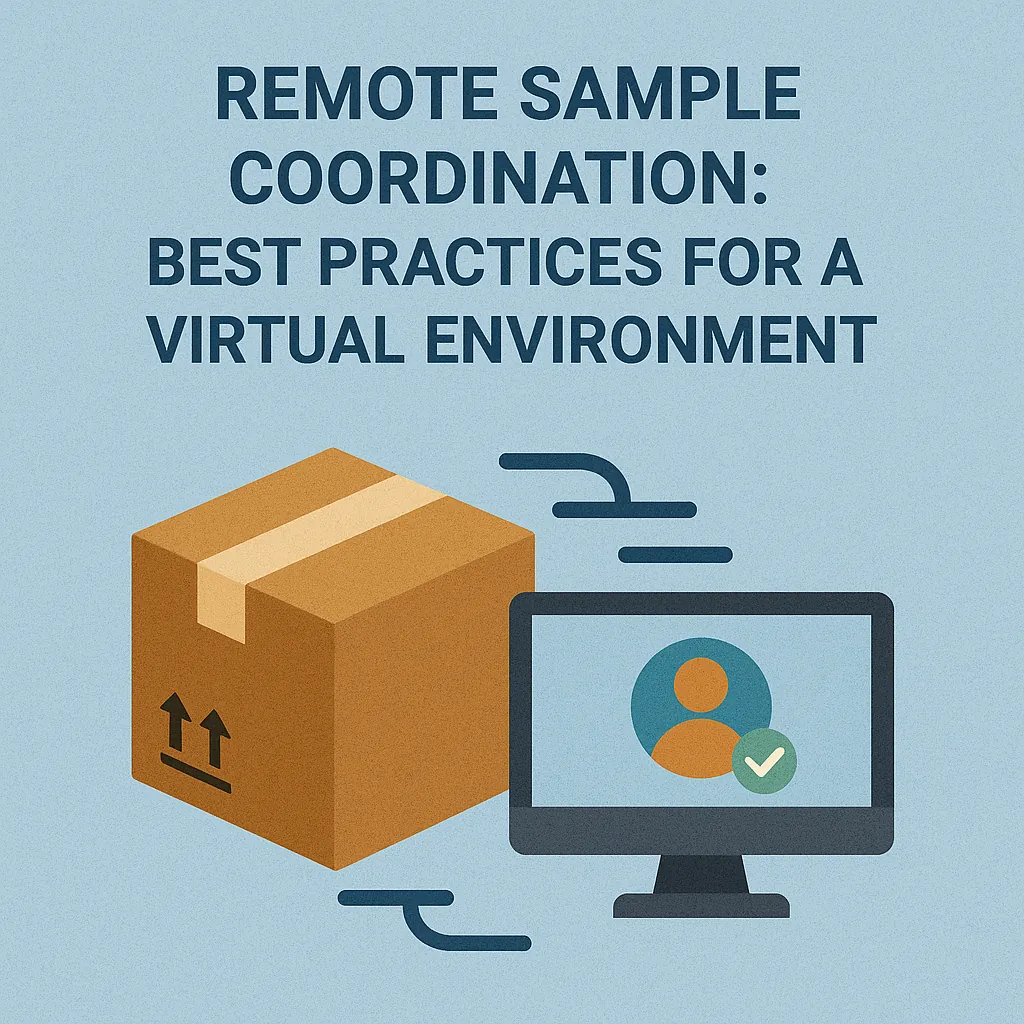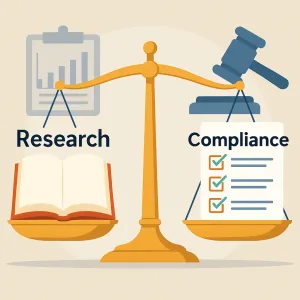Introduction to Remote Sample Coordination
Sample coordination refers to the systematic process of managing and organizing samples—whether they are physical products, prototypes, or data sets—essential for various projects. This role is crucial across multiple industries, including marketing, product development, and research, where the timely and accurate handling of samples can significantly influence project outcomes. Effective sample coordination ensures that all stakeholders have access to the necessary materials, facilitating informed decision-making and enhancing collaboration among team members.
With the recent shift to remote work, the dynamics of sample coordination have evolved dramatically. The transition to virtual environments has introduced new challenges, such as maintaining clear communication, ensuring timely delivery of samples, and managing logistics across different locations. Remote project managers and coordinators must adapt their strategies to navigate these complexities effectively. This shift has necessitated the use of digital tools and platforms that streamline communication and enhance collaboration, allowing teams to manage samples efficiently despite geographical barriers.
The significance of effective sample management in achieving project goals cannot be overstated. Proper coordination of samples not only helps in meeting deadlines but also ensures that the quality and integrity of the samples are maintained throughout the project lifecycle. By implementing best practices in remote sample coordination, project managers can foster a more organized and productive work environment, ultimately leading to successful project outcomes. This includes setting clear expectations, utilizing collaborative tools, and maintaining regular communication to address any potential issues proactively.
Understanding Challenges in Remote Sample Coordination
Managing samples in a remote work environment presents unique challenges that can significantly impact project outcomes. Here are some of the most common issues faced by project managers and coordinators in this context:
- Communication Barriers: In a remote setting, the lack of face-to-face interaction can lead to miscommunication and misunderstandings. Project managers may find it difficult to convey specific requirements or changes regarding samples, which can result in errors and delays. The reliance on emails and messaging platforms can complicate conversations, making it easy to overlook important details or context [5][7].
- Tracking and Managing Physical Samples: Without the ability to be physically present, tracking the status and location of samples becomes challenging. Managers may struggle to monitor milestones and identify potential delays in the sample delivery process. This lack of visibility can hinder timely decision-making and affect the overall project timeline [3][12].
- Team Collaboration and Coordination: Coordinating tasks across different team members and departments can be particularly difficult in a remote environment. The absence of a centralized workspace can lead to disorganization and misalignment on sample management tasks. Ensuring that all team members are on the same page regarding sample specifications and timelines requires effective use of project management tools and clear communication strategies [10][14].
- Delays in Sample Delivery and Feedback Loops: Remote work can introduce delays in the delivery of samples due to logistical challenges, such as shipping issues or time zone differences. Additionally, obtaining timely feedback on samples can be problematic when team members are dispersed. This can create bottlenecks in the project workflow, ultimately affecting deadlines and deliverables [11][12].
By understanding these challenges, remote project managers and coordinators can develop strategies to mitigate their impact, ensuring smoother sample coordination and more successful project outcomes.
Best Practices for Remote Sample Coordination
Effective sample coordination is crucial for ensuring that projects run smoothly and meet their objectives. Here are some actionable strategies to enhance sample coordination in a virtual environment:
- Utilize Project Management Tools for Sample Tracking: Leverage specialized project management software that offers features tailored for sample tracking. These tools can help you monitor the status of samples, manage deadlines, and assign tasks to team members. By using functionalities such as shared Gantt charts and Kanban boards, you can visualize the workflow and ensure that everyone is on the same page regarding sample progress and requirements [3][7].
- Establish Clear Communication Channels Among Team Members: Effective communication is the backbone of successful remote coordination. Set up dedicated channels for discussing sample-related issues, whether through instant messaging platforms or video conferencing tools. This ensures that team members can quickly address questions or concerns, share updates, and collaborate effectively, reducing the chances of miscommunication [4][12].
- Set Up a Centralized Digital Repository for Sample Documentation: Create a centralized location for all sample-related documents, such as specifications, approval forms, and tracking sheets. Utilizing cloud storage solutions allows team members to access necessary documents anytime, anywhere, fostering transparency and accountability. This repository should be organized and regularly updated to reflect the current status of samples [9][10].
- Implement Regular Check-Ins and Updates to Maintain Team Alignment: Schedule consistent check-ins to discuss sample progress, address any challenges, and realign on project goals. These meetings can be brief but should focus on key updates and any adjustments needed in the sample coordination process. Regular communication helps maintain team cohesion and ensures that everyone is aware of their responsibilities and deadlines [4][8].
By adopting these best practices, remote project managers and coordinators can significantly improve their sample coordination efforts, leading to more efficient project execution and successful outcomes.
Leveraging Technology for Effective Coordination
Technology plays a pivotal role in ensuring that processes are streamlined and communication remains effective. Here are some best practices and tools that can enhance sample coordination in a virtual environment:
- Project Management Software: Utilizing dedicated project management tools such as Asana, Trello, or Monday.com can significantly improve the organization and tracking of samples. These platforms allow project managers and coordinators to create tasks, assign responsibilities, and monitor progress in real-time. By centralizing all project-related information, teams can maintain clarity and accountability throughout the sample coordination process [3][10].
- Cloud Storage Solutions: Implementing cloud storage services like Google Drive, Dropbox, or OneDrive is essential for managing sample files and documentation. These platforms enable easy access to documents from any location, facilitating collaboration among team members. By storing samples and related documentation in the cloud, teams can ensure that everyone has the most up-to-date information, reducing the risk of errors and miscommunication [7][12].
- Virtual Meeting Platforms: The use of virtual meeting tools such as Zoom, Microsoft Teams, or Google Meet is crucial for enhancing communication among remote teams. Regular video conferences can help clarify project goals, discuss sample statuses, and address any challenges that may arise. These platforms also allow for screen sharing, which can be particularly useful when reviewing sample designs or documentation together [5][12].
- Automation Tools: Incorporating automation tools can streamline the tracking of samples and deadlines. Software like Zapier or Airtable can automate repetitive tasks, such as sending reminders for upcoming deadlines or updating team members on sample statuses. This not only saves time but also ensures that no critical deadlines are overlooked, thereby enhancing overall project efficiency [9][10].
By leveraging these technological solutions, remote project managers and coordinators can effectively manage samples, ensuring that their projects run smoothly and efficiently, even in a virtual environment. Embracing these tools not only enhances productivity but also fosters a collaborative culture among remote teams, ultimately leading to successful project outcomes.
Building a Remote Team Culture for Sample Coordination
Particularly in sample coordination, cultivating a strong team culture is essential for success. A cohesive virtual team can significantly enhance the efficiency and effectiveness of managing samples, ensuring that all members are aligned and motivated. Here are some best practices to foster a positive remote team culture for sample coordination:
- Encourage Collaboration and Open Communication: Establishing clear communication channels is vital in a remote setting. Utilize collaboration tools that facilitate real-time discussions, file sharing, and feedback. Regular check-ins and updates can help keep everyone informed and engaged, allowing team members to voice their ideas and concerns freely. This openness not only enhances teamwork but also builds trust among members, which is crucial for effective sample management.
- Foster a Sense of Accountability and Ownership: Assign specific roles and responsibilities related to sample management to each team member. When individuals feel accountable for their tasks, they are more likely to take ownership of their work. Encourage team members to set personal goals related to sample coordination and regularly review these goals in team meetings. This practice not only promotes responsibility but also empowers team members to contribute actively to the project’s success.
- Organize Team-Building Activities: To strengthen relationships within a remote team, consider organizing virtual team-building activities. These can range from casual coffee breaks to structured games or challenges that require collaboration. Such activities help break down barriers, foster camaraderie, and create a more enjoyable work environment. A strong interpersonal connection can lead to improved collaboration and a more cohesive approach to sample management.
- Share Success Stories and Recognize Team Contributions: Celebrating achievements, no matter how small, can significantly boost team morale. Create a platform for sharing success stories related to sample coordination, highlighting individual and team contributions. Recognizing efforts publicly not only motivates team members but also reinforces the importance of their roles in the overall project. This recognition can be in the form of shout-outs during meetings, newsletters, or dedicated channels in collaboration tools.
By implementing these strategies, remote project managers and coordinators can build a robust team culture that enhances sample coordination efforts. A strong culture not only improves productivity but also fosters a sense of belonging and commitment among team members, ultimately leading to successful project outcomes.
Measuring Success in Remote Sample Coordination
Particularly in sample coordination, establishing clear metrics and methods for evaluating effectiveness is crucial. This section outlines key performance indicators (KPIs), the significance of feedback loops, and the value of retrospective meetings, along with examples of successful practices in remote sample coordination.
Key Performance Indicators (KPIs)
Identifying relevant KPIs is essential for measuring the success of sample management in a remote setting. Some important KPIs to consider include:
- Turnaround Time: Measure the time taken from sample request to delivery. This helps assess the efficiency of the coordination process.
- Sample Accuracy: Track the percentage of samples that meet the specified requirements upon first delivery. High accuracy rates indicate effective communication and understanding of project needs.
- Stakeholder Satisfaction: Use surveys or feedback forms to gauge the satisfaction levels of team members and stakeholders involved in the sample process. This can provide insights into areas needing improvement.
- Cost Efficiency: Analyze the costs associated with sample management, including shipping and handling. Keeping these costs within budget while maintaining quality is a key indicator of success.
Importance of Feedback Loops
Implementing feedback loops is vital for continuous improvement in remote sample coordination. Regularly soliciting feedback from team members and stakeholders allows project managers to:
- Identify Areas for Improvement: Feedback can highlight specific challenges faced during the sample management process, enabling teams to adapt and refine their strategies.
- Enhance Communication: Open channels for feedback foster a culture of transparency and collaboration, which is essential in a remote environment where face-to-face interactions are limited.
- Encourage Innovation: By actively seeking input, teams can discover new methods and tools that enhance sample coordination, leading to more effective practices.
Conclusion
Effective sample coordination is crucial for ensuring that projects run smoothly and meet their objectives. As teams increasingly operate in virtual environments, the ability to manage samples efficiently becomes a key differentiator in project success. Here are the key takeaways to consider:
- Importance of Effective Remote Sample Coordination: The ability to coordinate samples remotely not only streamlines project workflows but also enhances communication among team members. Clear and timely communication is essential, as it helps to mitigate misunderstandings and ensures that all stakeholders are aligned on project goals and timelines. By prioritizing effective coordination, project managers can significantly improve the overall efficiency of their projects [1][12].
- Leveraging Technology and Building Team Culture: Utilizing the right technology tools is vital for remote sample coordination. Tools that facilitate communication, document sharing, and project tracking can enhance collaboration and keep everyone informed. Additionally, fostering a strong team culture is essential in a remote setting. Encouraging open dialogue, recognizing team achievements, and promoting a sense of belonging can lead to higher engagement and productivity among team members [3][10][12].
- Continuous Learning and Adaptation: The landscape of remote project management is constantly evolving, and so should the strategies employed by project managers. Embracing a mindset of continuous learning and adaptation allows teams to refine their coordination processes over time. Regularly assessing what works and what doesn’t, and being open to new tools and methodologies, can lead to improved outcomes in sample coordination efforts [6][13].
By implementing these best practices, remote project managers and coordinators can enhance their sample coordination efforts, leading to more successful project outcomes and a more cohesive team environment. Embrace the challenges of remote work as opportunities for growth and innovation in your project management practices.
Find out more about Shaun Stoltz https://www.shaunstoltz.com/about/.
This post was written by an AI and reviewed/edited by a human.



